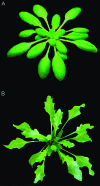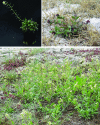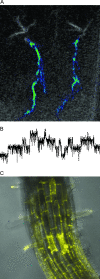Learning from evolution: Thellungiella generates new knowledge on essential and critical components of abiotic stress tolerance in plants
- PMID: 19529830
- PMCID: PMC2639741
- DOI: 10.1093/mp/ssn094
Learning from evolution: Thellungiella generates new knowledge on essential and critical components of abiotic stress tolerance in plants
Abstract
Thellungiella salsuginea (halophila) is a close relative of Arabidopsis thaliana but, unlike A. thaliana, it grows well in extreme conditions of cold, salt, and drought as well as nitrogen limitation. Over the last decade, many laboratories have started to use Thellungiella to investigate the physiological, metabolic, and molecular mechanisms of abiotic stress tolerance in plants, and new knowledge has been gained in particular with respect to ion transport and gene expression. The advantage of Thellungiella over other extremophile model plants is that it can be directly compared with Arabidopsis, and therefore generate information on both essential and critical components of stress tolerance. Thellungiella research is supported by a growing body of technical resources comprising physiological and molecular protocols, ecotype collections, expressed sequence tags, cDNA-libraries, microarrays, and a pending genome sequence. This review summarizes the current state of knowledge on Thellungiella and re-evaluates its usefulness as a model for research into plant stress tolerance.
Keywords: Brassica; abiotic/environmental stress; adaptation - evolutionary; comparative genomics; gene expression; ion channels.
Figures





References
-
- Alemán F, Manuel Nieves-Cordones M, Vicente Martínez V, Francisco Rubio F. Differential regulation of the HAK5 genes encoding the high-affinity K+ transporters of Thellungiella halophila and Arabidopsis thaliana. Env. Exp. Bot. 2008 in press.
-
- Al-Shehbaz IA, O'Kane SL, Price RA. Generic placement of species excluded from Arabidopsis (Brassicaceae) Novon. 1999;9:296–307.
-
- Amtmann A, Sanders D. Mechanisms of Na+ uptake by plant cells. Adv. Bot. Res. 1999;29:75–112.
Publication types
MeSH terms
Substances
Grants and funding
LinkOut - more resources
Full Text Sources
Other Literature Sources

